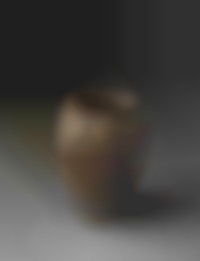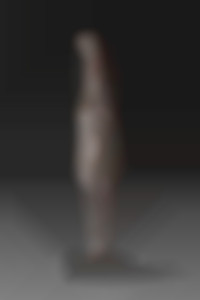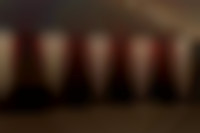Amulet of the royal child
Gold. h. 3,1 cm, l. 2 cm, w. 0,6 cm
New Kingdom (1539 – 1076 BC)
Provenance unknown
Cat. 6679
A child with his index finger held to his mouth, his shaved head and the side braid of youth, is usually connected to the figure of Hor-pa-khered (Horus the child) considered to be the son of Isis and Osiris. Horus the child, also known as Harpocrates, was often depicted seated on the legs of his mother who, with her magic, had cured him from the bite of poisonous animals. In the case of this amulet, the deity is depicted in profile, crouching and wearing a wide pleated skirt, a garment particularly in vogue during the New Kingdom. It is a depiction of the so-called 'royal child' or 'divine child', which could symbolise the sun god as a newborn child, usually depicted seated on a lotus flower.
The amulet is made of gold foil and modeled in detail on both sides. The front and back sides were worked separately and then joined together afterward. The figure is hollow and has a slightly flattened right side. At the top of the amulet is a small suspension ring, which allows it to be inserted into a necklace or bracelet and used in daily life or the afterlife. Gold, besides being an extremely precious material, possessed strong symbolic properties, as it represented the skin of the gods but was also connected to vital energy and the sun.
Although it is not possible to determine the context of the amulet's provenance, since it arrived in the Egyptian Museum's collection as the result of a purchase, we can imagine that its purpose was to grant the wearer the magical protection of Isis and, at the same time, a wish for eternal rebirth.





















































